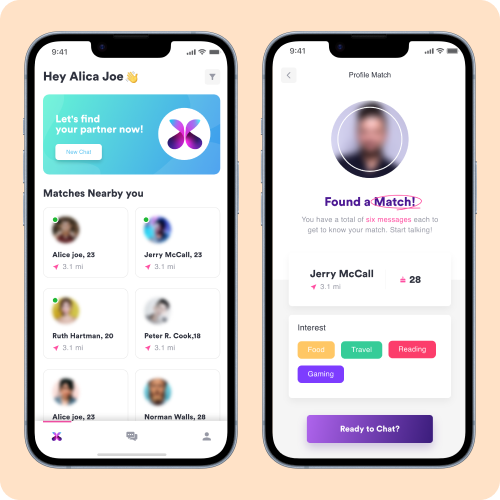The pandemic more than any other mishappening paved the way for the future of eLearning that has forced the world to engage with virtual learning. The idea of online education after COVID was to maintain that continuity in education through the latest eLearning trends in the aftermath. But, fast forward to today, eLearning solutions have become the norm among learners.
During those difficult times, speculations were made about the impact of the future of online education in the post-COVID era.
Although, some of the cases may require an immediate retreat to traditional forms of classroom learning. But for other such courses that do not require the need for a physical classroom setup, the paradigm shift towards online education after COVID has brought about a momentous change that has forced us to reimagine how education could be delivered.
Moreover, digital learning trends have now become an alternative pathway for many who aspire to continue their distance learning through developed eLearning platforms that cater to their field of interest. The future of eLearning has traditionally been viewed as a well-suited path for adult learners who are seeking higher education opportunities.
The emergence of COVID-19 has led educators and learners all across the world to quickly adapt to virtual courses and hop on some of these well-known eLearning trends.
Future of eLearning – Online Education After COVID
During the early stages of the pandemic, ‘emergency remote teaching’ was coined as a term to describe the temporary nature of this transmission of knowledge. In many of these cases, there was an influx of learning instructions being shifted online and then returning to traditional classrooms and then shifting back to online due to the uneven surges in the cases.
Whereas in many other cases, a combination of what later came to be known as the hybrid model of education delivery became widespread. Students could attend the classes online or in person. But in many instances, a lot of institutions had to consider the expenses and constraints of a specific learning environment.
Elearning was known to be a more cost-effective and feasible application of learning that could be accessible to a majority of students. With further educational innovations, there was a universal adoption of remote learning.
However, there were a few setbacks that had to be addressed such as a lack of internet connectivity in a few areas especially the rural ones, and competition for tech resources. Now that 2020 has witnessed creative solutions to bridge the gap between the online education system has emerged. With increased availability and adoption of tech resources, integration with e-learning has become the new normal.
Furthermore, technological advancements in the e-learning industry have made it feasible to depict knowledge creatively. Several start-ups have started to build thousands of eLearning apps and have used various creative approaches to increase the growth of education app development!
As per the reports of the IMARC group, the global eLearning market size has reached about $253.3 Billion in 2021. This market is further predicted to grow up to $521.8 Billion by 2027 with a growth rate (CAGR) of 9.9% from 2022 to 2027.
The education mobile app development industry has emerged as an important focus for many who are looking for ways to learn and get mobile apps developed. This blog will provide you with all the latest eLearning trends that have helped in elevating knowledge acquisition and bring it up to a new level.
Benefits of Education App Development
1. Wider Accessibility
The possibility of accessing any learning material from any location and at any time makes the process of learning even more convenient. These changing times have witnessed an increase in education mobile app development with instant access to information and device connectivity. The rise of smart devices has sparked a revolution in the future of eLearning.
2. Flexibility
The future of online learning seems to be a promising one as it entirely eliminates the need for learning to require a specific time and location. The upcoming eLearning trends also provide flexibility to acquire knowledge through multimedia formats such as videos, podcasts, documents, etc.
3. Increasing Retention Rates
The rise of smart devices has sparked a revolution in the future of eLearning. The content for learning is much easier to grasp with the innovative techniques that most of these course materials online have.
4. Using Multiple Devices
Training should be as convenient as possible. And, thanks to technological advancements, the same eLearning courses may be accessed on any device that a student would use regularly, from PCs and laptops to tablets and smartphones.
5. Improved Performance
Students generally prefer to have their learning during times when they feel the most productive or when it does not interfere with their regular schedule. Making it convenient for them to learn at their own pace and give access to information instantly has paved the future of eLearning by inculcating a learning habit.
6. Remote Access & 24×7 Availability
Another impact of mobile apps on education is offline & remote accessibility. They enable students to learn at any time and from any location on the planet. These apps allow students to pursue their interests at any time of day. Many people who enroll in such online courses are from remote areas and no longer have to worry about traveling or relocating to a different place to further their education. These educational apps also allow teachers and institutions to communicate with students all over the world.
Mobile apps for the education sector are changing the learning environment. Clear evidence of this is that the mobile learning market size is anticipated to grow from USD 8 Bn to USD 95 Bn between 2018 and 2026, with a CAGR of 26%.
The adoption of the latest technology and digital learning trends is minimal even though it offers vast and irresistible benefits. Some of the technologies are yet to prevail in the market for wider adaptability in the eLearning industry.
Latest e-Learning Trends and Technologies For Adoption
1. Artificial Intelligence (AI)
AI in today’s world has become an absolute necessity owing to its primary advantage of minimal errors and reduced manual strain and interference. This is also cheap compared to its human counterpart. Every company, whether an IT firm or a manufacturing organization has integrated AI into its main functioning.
The education sector is somewhat untouched by the hands of AI, as it relies completely on the traditional medium of books and paper, also requiring offline classes. Internet and video conference is being adopted as a medium for conveying or teaching. AI even now needs to have some strides to overcome to bridge the gap.
2. Virtual Reality (VR)/Augmented Reality (AR)
This technology is used to play games or watch 3D movies. This is usually perceived as a mode of entertainment, However, VR/AR can be such a beneficial technology for several eLearning companies.
Few attempts have been made to use this for developing and training employees, but having little to no success as there is heavy cost incursion for developing such training courses for VR/AR devices. This may change shortly.
3. Simulation
There has been a market for simulation courses for quite some time now as they are used in IT-related training courses. They are usually used to train the employees to work with software that will be utilized in the workstation. The main objective of a Simulation is to provide an experience in a virtually simulated manner.
A firefighter, for example, cannot be deployed immediately to an emergency. It won’t also be possible to create a fake emergency without any cost incursions. To overcome both obstacles the firefighter will be provided with a simulation where they can learn and practice for when there’s a real emergency. Even though it may seem promising, it does include heavy costs to develop education app with such simulations.
4. Mobile Learning
It may sound strange to many that eLearning has not yet adopted mobile learning into its spectrum because several firms still rely on the traditional form of eLearning through computer-based and instructor/facilitator-based learning. It is reassuring to know that several organizations are switching over to mobile learning, either to it being popular or having many advantages. Either reason stands to benefit the firm as well as the learner.
Best eLearning Trends for Education App Development
1. Shift To Virtual Interaction
Virtual Interaction has become the new norm for employee communication. While on lockdown, most companies have required their employees to work from home and so they switched to this mode for live interactions. It appears that this trend will continue in the coming years. Businesses will now acquire more sophisticated video conferencing capabilities. Messaging and social media interactions will also prosper.
2. Business Process Automation
A lot of businesses are testing automation for their processes in multiple sectors or units. Research conducted by MuleSoft states that; 30% of IT strategists and top decision-makers believe that automation is going to be in charge of digital transformation in the future. Automation tools like ERP and CRM systems are already switching conventional businesses into smart companies. Even in 2022 automation of business processes will continue to gain momentum.
3. Enhanced Emphasis On Omnichannel Marketing
The growth of omnichannel retail marketing is expected to continue in the coming year. The main benefit of omnichannel marketing is that it uses a multifaceted strategy, integrating both online and physical stores into one supply chain. It tries to remove internal barriers and process silos, omnichannel marketing can provide unparalleled visibility across various platforms. More marketers and businesses will start utilizing omnichannel retail’s benefits in 2022 and beyond.
4. More Focus On Predictive Analytics
The manner in which medical scientists were able to predict the virus infection growth rate and the peak of the infection in different regions grabbed the attention of the people during the COVID-19 crisis. The power of predictive display was clear for everyone to see.
Because of this medical facilities utilized analytics to locate the infection and its time frame of the spread of the contagion with remarkable accuracy, all this just with the help of predictive analysis. While this will continue to rise in importance, the business will also use prescriptive analytics to analytics-based prescriptions to deal with various constraints and issues.
5. More Investment In Cloud Technologies
For the last couple of years, cloud technology has continued to become popular. Cloud computing will be the key to digital transformation in 2022 and beyond. Thanks to the emergence of several leading cloud platforms and their pay-per-usage model, cloud adoption is becoming easier and more affordable. Cloud applications will replace legacy applications, allowing for more ease in collaboration and easier ways to employ remote employees and remotely located talents.
The use of cloud computing has become quite famous, and cloud computing will be essential to the digital transformation in 2022 and beyond, thanks to several leading cloud platforms and their pay-per-usage model, cloud adoption has now become easier and much more affordable. Due to the emergence of several leading cloud platforms and their pay-per-usage model, Legacy apps will be replaced by Cloud applications.
6. Cybersecurity Will Be Very Crucial
You might very well be aware of the fact that hackers from all over the globe utilized the pandemic to their advantage, leading to several security attacks across the globe. The number of attacks on banking apps and websites has seen a meteoric rise of 238%. On cloud servers, there has been a 600% increase in attacks all around the world. Naturally, more robust cybersecurity measures will be a more dominant trend in the coming years.
The emergence of Artificial Intelligence (AI) and machine learning technologies will help build more powerful tools and algorithms to deal with equally advanced cyber threats. In 2022, companies taking the path of digital transformation will face increased cyber threats and they will have to deal with more advanced security measures, based on intelligent algorithms.
7. Headless Technology Will Have A More Disruptive Role To Play
eCommerce apps and business websites have already been affected by headless technology, which represents a scenario in which companies can segregate the front-end presentation layer of their digital solution from the back-end data management and functionalities. For instance, Amazon Alexa and similar assistants can now shop products and services on behalf of customers.
On the other hand, it is customer retention that is increasingly becoming important for businesses to maintain growth, and this is an area that is propelling the growth of omnichannel marketing. This is one reason why the customer acquisition cost for eCommerce apps and solutions is steadily increasing. Headless technology will continue to have a disruptive effect on eCommerce.
8. Personalized Learning Experiences
Businesses adopting digital transformation need to consider this to be a key factor for a satisfactory customer experience as most customers purchasing and browsing from their smartphones have a preference for a personalized shopping experience. Personalized shopping has also been embedded across most leading eCommerce stores as an important factor, and this continues in the years to come.
eLearning businesses even while adopting digital transformation, need to deliver highly personalized learning experiences as a key value offering.
9. Work from Home
Work from home has been a long-standing demand for workers and employees across the sector to enjoy the flexibility of doing their work from their home environment. Owing to the pandemic working from home has become the new normal in most sectors except the ones dealing with essential commodities and services.
5 Reasons Why Online Learning is the Future of Education
Much like any other commodities such as food, clothes, and accommodation, access to information has now become a fundamental need. It has evidently bridged the gap between skillset learners who want to adapt themselves to a modern workplace and the knowledge delivered by the traditional education system.
Here are 5 reasons why online learning is the future of education:
1. Continuous Learning
There has been a paradigm shift that the education sector is facing with continuous learning – one of the best e-learning trends on how learners expand their skillset along with the new developments in an ever-changing environment.
This becomes a permanent process of acquiring skills and knowledge that enables people to perform at their jobs meanwhile adding newer dimensions to their existing professions. With the advances in the modern work environment, employees have to keep adapting themselves and responding to changes, thereby becoming an essential requirement in today’s world.
The more employees are flexible and knowledgeable about things, the more they can contribute to their organizations. These eLearning trends establish a cost-effective way to bring about a change in employees to keep up with the changing work environments.
2. Personalized Learning Paths
This is one of the eLearning trends that largely takes up a learner-centric approach that focuses on the learner’s ability to grasp concepts and acquire knowledge in a leaner-friendly way. The purpose of this approach is to find the right strategies that can be implemented in learners.
With their eLearning courses, learners can set their own goals and learn at their own pace. Amongst all of the eLearning trends, this is one of the best advantages that online education provides to its learners which is also unique in its way. eLearning trends such as these help learners in navigating their path to achieve their goals and also form connections by networking with other learners.
By shifting its attention to a wider range of online activities and other eLearning trends, the future of eLearning is on tremendous growth as there are various mediums of learning apart from text modules such as video instructions, virtual classrooms, presentations, and so on.
3. Social Learning
One of the indirect eLearning trends is social learning wherein learning is more abstract and can be acquired through interactions. Although, many think that social learning can only be a part of face-to-face learning but this is not the case. With the upcoming e-learning trends, elements of social learning are already being integrated into eLearning platforms. One such practice of social learning is live classrooms that enable learners to interact in a rich learning environment.
These digital learning trends help learners to connect with others to hold mindful discussions and the education app development company is working towards bringing more changes to connect their learners so that they do not miss out.
4. On-Demand Learning
This is one of the best features of eLearning apps that the latest e-learning trends are maximizing for its expansion. Learners can gain access to information anywhere and at any point in time. This control has enabled people from all walks of life to become avid learners making the future of eLearning even more prominent.
Learners can access learning content according to their needs from a wide range of courses. Modern learning technology and the availability of high-quality learning materials have changed the learning landscape as well as the learning system.
It allows them to learn and work together. Besides students who have leveraged this to their advantage, working professionals can now pursue eLearning at any time of their day to upskill and develop professionally as well as personally.
Many companies are passionate about advocating for employee training and reach out to the best instructors to arrange online sessions for employee learning and development. Whereas, many others develop an eLearning portal that caters to their objective of employee training.
5. Gamified Learning
Rewarding users of the eLearning platform through a gamification strategy can make users feel more connected to the platform and stay engaged throughout the course. This keeps them hooked to the platform as it makes them feel rewarded while they are learning. Latest e-learning trends are now introducing newer functions and design patterns that help learners progress.
This feature inspires learners with various other interactive learning features such as online currency vouchers, redeeming rewards, and a lot more.
Future of Online Learning – Final Words
With the outbreak of COVID-19, the future of eLearning has boomed over the years, and to make your eLearning app stand out from the diluted market, you have got to maximize on the latest eLearning trends.
However, choosing the best education app development company that leverages competitive features is a difficult catch. The eLearning industry has gained widespread popularity and if you want to build an educational app that plays well in the field, your app will have a long-lasting impact on your business.
We at Resourcifi are ranked 4.8/5 as an education app development company by Clutch in developing eLearning apps for several companies.
With an expert team of in-house app developers, our expertise lies in developing future-proof eLearning apps with the latest eLearning trends for various Edtech companies.
Contact us now if you have a project in mind! We are an award-winning education app development company with over +12 years of experience. Let’s build an app using the best eLearning trends that pave the future of eLearning.








































